CLAS241 - Dark Ages - (1100 - 700 BCE)
1/5
There's no tags or description
Looks like no tags are added yet.
Name | Mastery | Learn | Test | Matching | Spaced |
|---|
No study sessions yet.
6 Terms
Facts about the dark ages
Bronze Age ends in widespread destructions
Fires
Lots of migration (sea peoples)
Uncertain who the sea peoples are
Loose band of different individuals (ex. Egyptians, etc) who contributed to the destruction
Decrease in number of settlements
Thus, there’s a decrease in material production (ex. Art)
Decrease in overall population
Cyprus seems to be particularly important because it survives well
Early material comes up here
Alphabet gets adapted by Greece
The Dark Ages are broken up into:
Sub-Mycenaean
Protogeometric (1000-900)
Geometric (Early, Middle, Late)
Bronze age is over
Iron becomes the main material
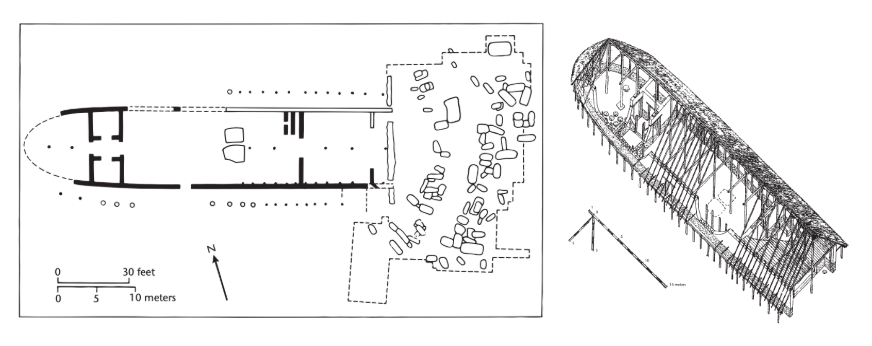
Plan of Heroon - Lefkandi. Dark Ages. 1100 - 700 BCE.
A heroon is a temple for a hero (a subdivine person)
But basically for ancestral worship
There’s a room in the front resembling a porch – looks like a megaron – showing evolution from the Bronze Age
In the middle of the Heroon, there are 3 burials in 2 shallow pits
1) A team of horses
Horses pull a chariot
Could be for chariot warfare (common in the Bronze Age), but it also could be a ceremonial chariot (since war chariots disappeared during the Iron Age)
2) A cremated male
Inside a bronze urn
This urn came from Cyprus, showing definitive trade relations
A sword was beside the urn
Linen covering the urn probably helped preserve the bronze
3) A buried female
Buried with a lot of jewelry = high status and wealth
She wore metal breast decoration
Around the Heroon, there’s a series of post holes
Holes are not for architectural purposes
Looks like the beginnings of later Greek architecture
Bridge between what we see in the bronze age and what we see in later periods
More burials are at the east end of the Heroon
Centaur figures were found in the burials
They were terracotta figures like the hedgehog
Fishnet pattern on the front looks like armour
Telling a story of a centaur at battle
Sculpture more advanced than other decorative arts like vases?
Other items found in the Heroon
Gold and silver (suggests that the grave occupants were wealthy and important)
Jewelry - rings and earrings
“Safety pin” in a fibula shape
Art piece of a horse and a man ploughing the field
The man’s body looks from the late bronze age but more rounded
Some of the figures and prestigious goods were used as transactional votive offerings
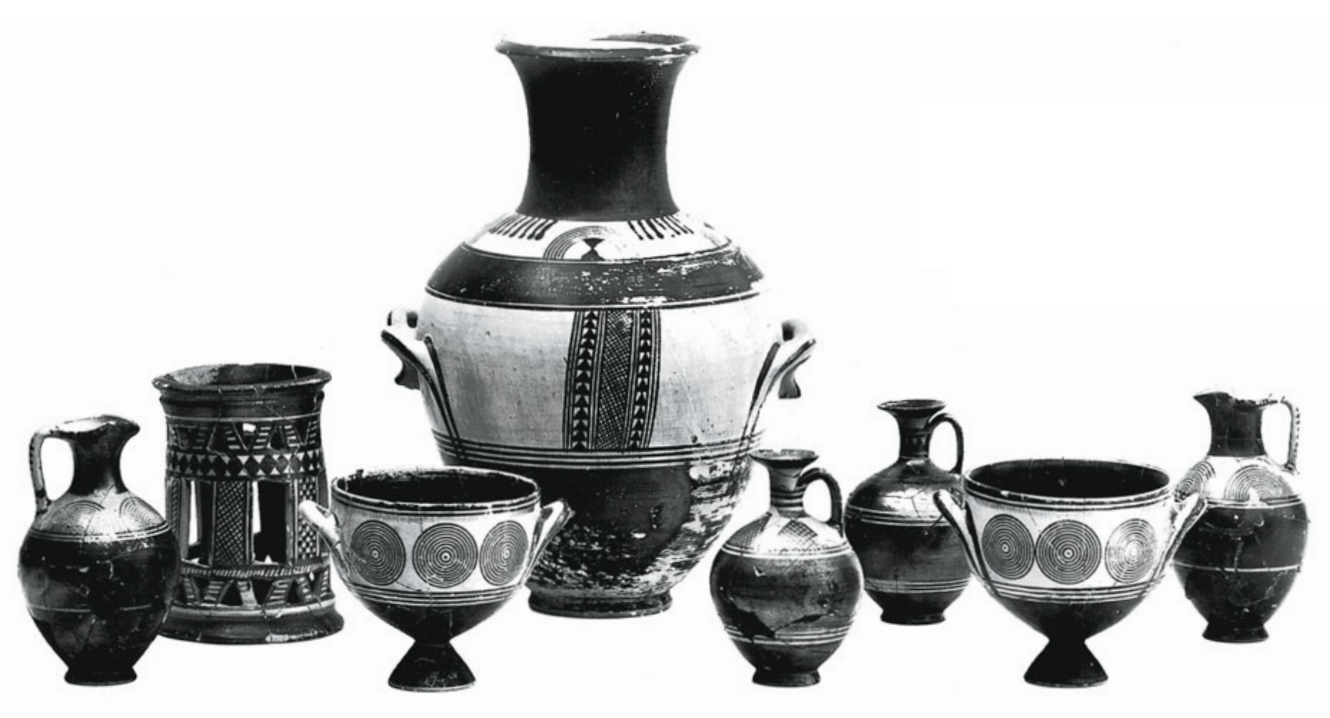
idk which one is gonna be displayed on the midterm HELP, just know that it has spirals (and search it up on google to familiarize yourself with it)
Protogeometric Amphora. Dark Ages. 1100 - 700 BCE.
Appears in Athens
Shapes of Protogeometric pottery (the silhouette) are mostly influenced from Mycenaean pottery
Storage vessel for liquid
Popular and often traded
Potter’s wheel arrives in Greece
Pots were being made on a faster wheel with more precise and crisp contours
Concentric circles were easily created (unlike the free-hand error-prone lines of sub-Mycenaean decoration)
Designs were still simplistic/limited
Also had cross-hatched triangles, panels, and zigzags symmetrically arranged
Decoration emphasized form
Like the lines idk
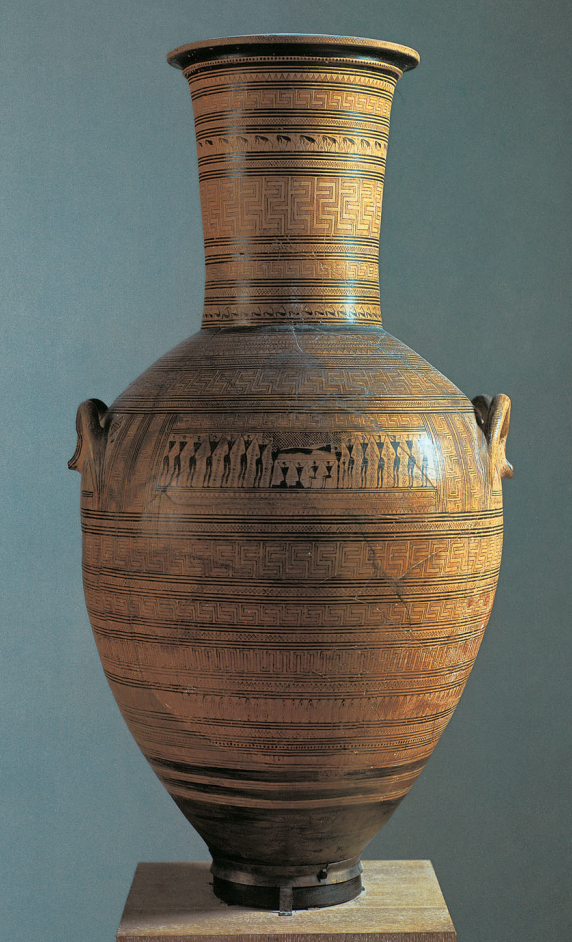
Geometric Amphora. Dark Ages. 1100 - 700 BCE.
The one shown in the picture is called the Dipylon amphora (from kerameikos cemetery)
It was really big - the size suggests it belongs to a wealthy person
Amphoras were found outside graves and held cremated remains
Shows zig zags, herringbone pattern, interlocking patterns
Greek key/meander
The panels between the handles show an important scene:
Prothesis: The laying out of the body on the funeral bier
Secondary figures are employing gestures of mourning (i.e tearing their hair)
Suggested to be family members surrounding the deceased
The smaller bodies in front of the bier are probably children
Mixed perspectives
Profile view of the body on the bier
Birds eye view of the shroud, to not obscure the body
Geometric figures
Influence of old forms
But with rounded features like butt, looks more naturalistic
The dead person is a woman (gendered by the skirt)
Shows evolution and continuation
Evolution:
Depiction of narrative scenes like the funeral
Shows social context: family mourning the decreased
More detailed/rounded bodies
Continuation:
Geometric forms and patterns
Gendered clothing
Mixed perspective
Dark horizontal bands that organize the designs of the vase
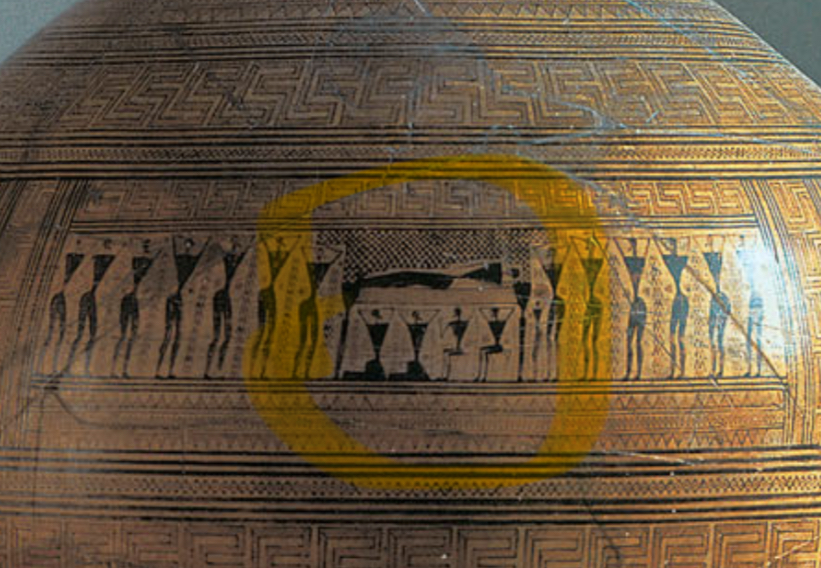
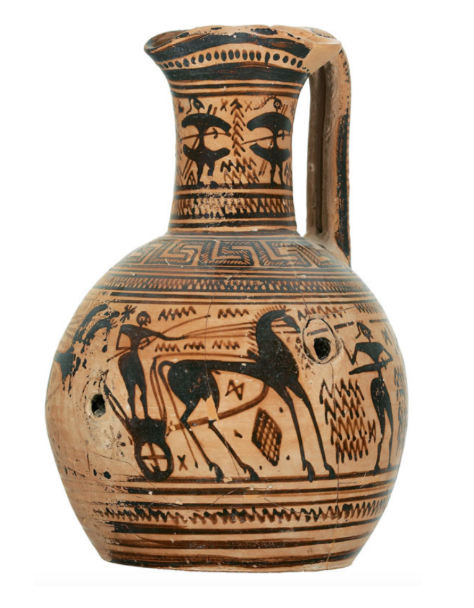
Geometric Oinochoe. Dark Ages. 1100 - 700 BCE.
Found on a grave
For drinking and pouring
Using more space than protogeometric amphora
Shows interlocking patterns - “Greek key” or “Meander”
Painted figures on pottery
Last time we saw that was the warrior vase
Figures have shields and swords
Like the figure-of-eight shield (found in Knossos)– could be connected to earlier period
Technique where the shield and the body are united, showing that they’re soldiers
Indicates advancement in art
Typical Bronze age body form with wide shoulders, thin waist, big butt
But an attempt at rounding things
Similar to the warrior vase
Ground and head lines
Mixed perspective (profile head and legs but frontal body)

Unravelled version of the geometric oinochoe
If you look closely at the middle, you can see a pair of men right beside each other:
Could be compositional (2 separate bodies look connected)
Could be the conjoined twins (Reference to Homer, Illiad)
The twins fight at the side of the Trojans
First time we see the Greeks referencing Homer
Relation between text and art is dynamic, don’t know which comes first